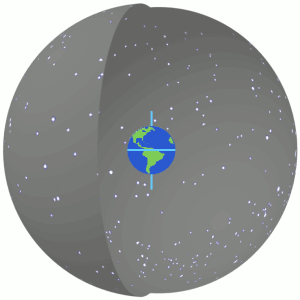The prime meridian cuts through the United Kingdom of Great Britain and Northern Ireland, the French Republic, the Kingdom of Spain, the Democratic Republic of Algeria, the Republic of Mali, the Togolese Republic and the Republic of Ghana. It starts at the north pole and ends at the south. Latitude refers to the angle of the surface from the equator, while longitude refers to the angle of the surface from the prime meridian.
Right ascension and declination measure celestial coordinates. It is based on latitude and longitude. Declination is the angle between it and the celestial equator and is measured in degrees. right ascension is measured in hours, where the ecliptic is. It is where the path of the apparent path of Sun crosses the celestial equator each March. It is measured in hours.
Mercury, Venus, Mars, Jupiter and Saturn can be seen with the naked eye at some point. They can be seen as they reflect some portion of sunlight they receive back into space. The size and position of the planet and Earth affect its visibility. Planets can be seen during a period called "apparition". It is the period of consecutive days or nights with the heliacal rising of the body and ending with its heliacal setting.
 |
| By Tfr000 (talk) 20:50, 17 April 2012 (UTC) - Own work, CC BY-SA 3.0, https://commons.wikimedia.org/w/index.php?curid=19127102 |
Ursa Minor, a constellation, can be seen with the naked eye. It points towards Polaris, the North Star. It looks like a pot.
Ursa Major contains the Big Dipper, an asterism.
Orion has a distinctive belt, made up of 3 rather bright stats. They make up Orion's belt.
The horizontal system is a hemisphere as the observer can only look at one half of the night sky at once as the Earth blocks the other half. The altitude, azimuth, horizon and zenith are involved. The altitude is the degree above the ground; the horizon is the horizon; azimuth the degree you turn; and the zenith the peak.
Orion's Sword points south, so you can tell your direction as long as you can somehow see it. In the northern hemisphere, during September evenings, the line made up by the tail of the Big Dipper points to Polaris in the northwest direction. Thus, constellations and asterisms can be used to find other constellations and asterisms to identify directions.
I learnt about how to find my way when lost and how to use this information to survive. I also learnt about geography and how to locate coordinates. I also learnt the skill of typing without looking at my keyboard so as to not waste time. I felt that the lesson could have had slightly more time given to take down information. I will use it next time to type faster and look at the screen to see if I am not behind time.

Comments
Post a Comment